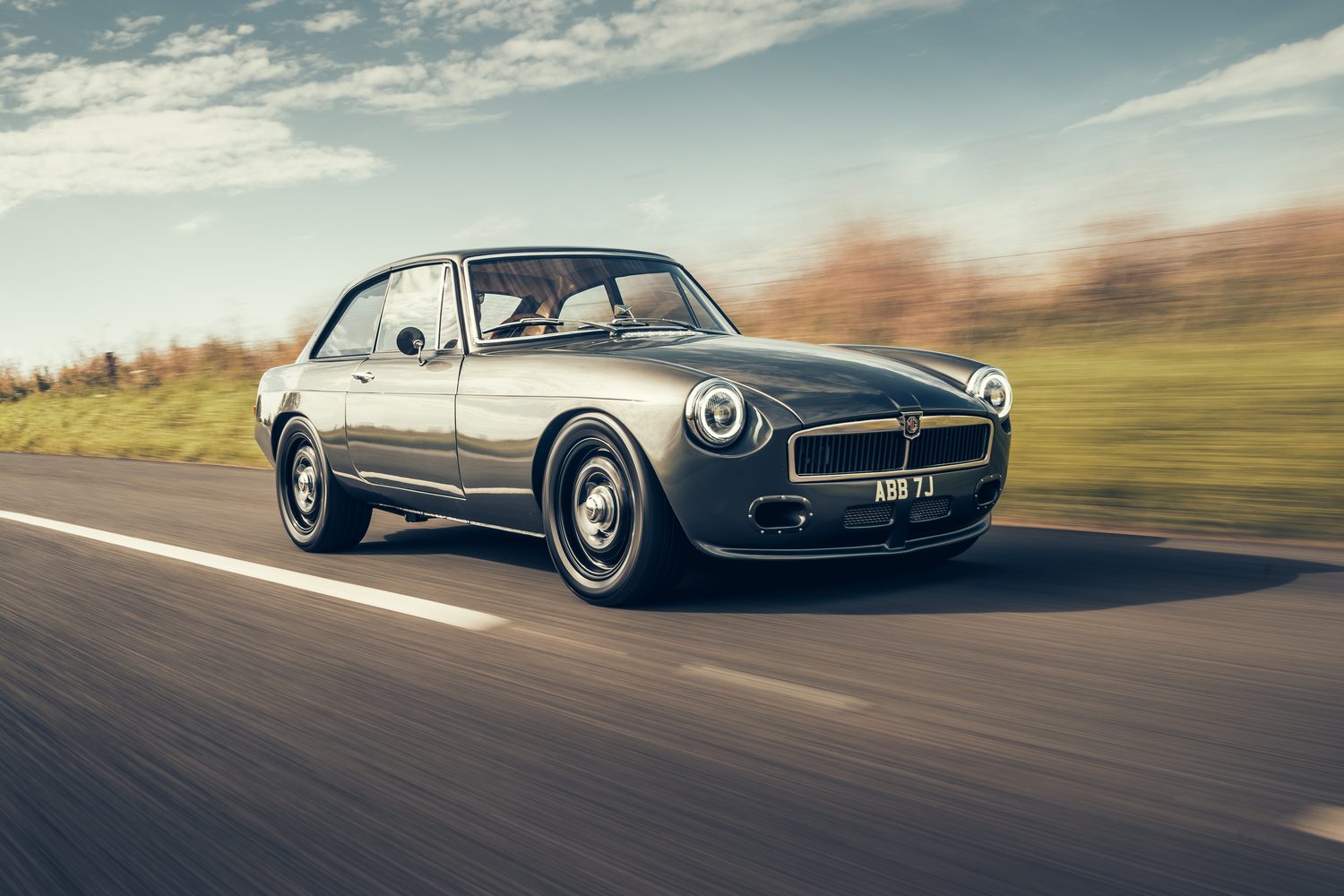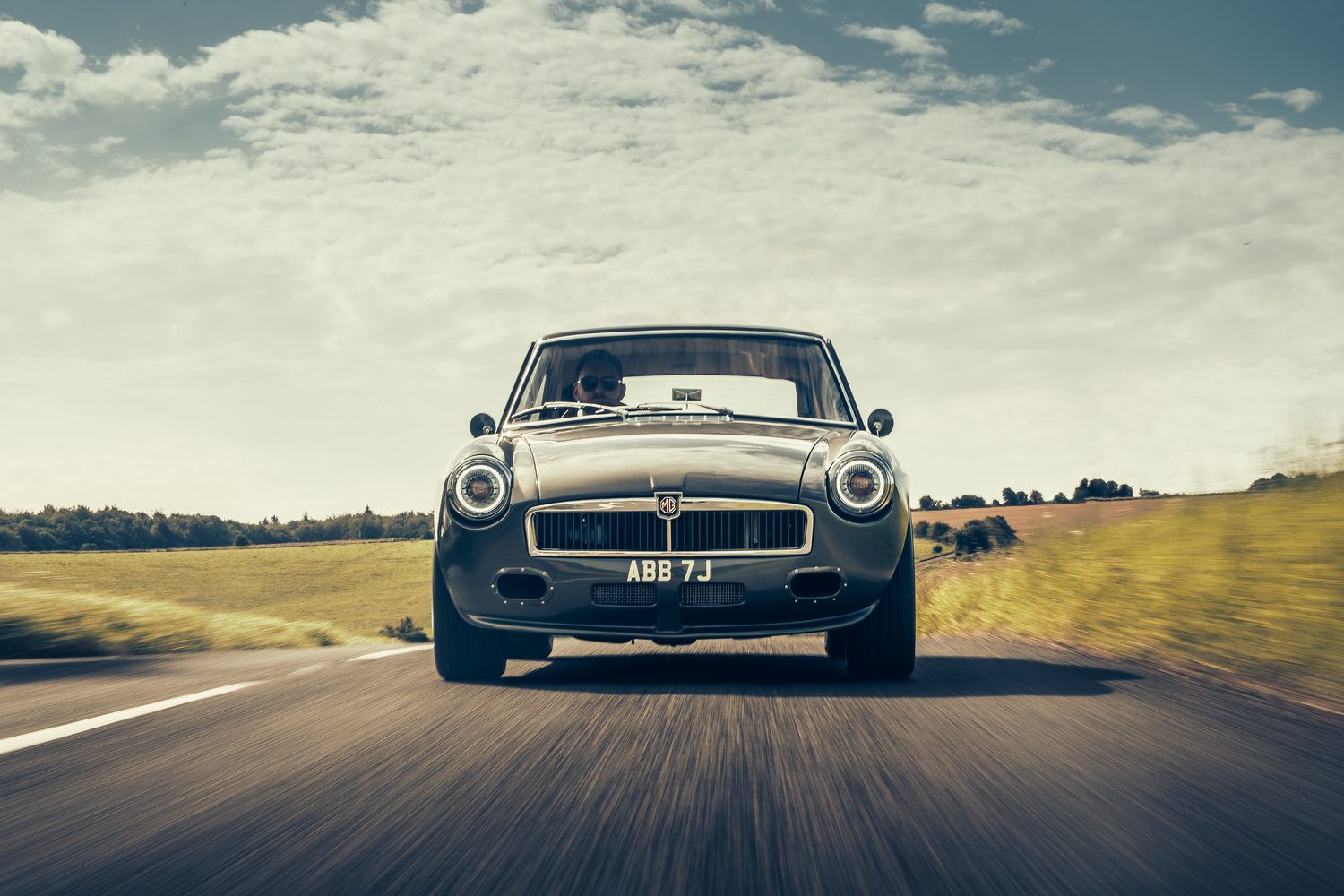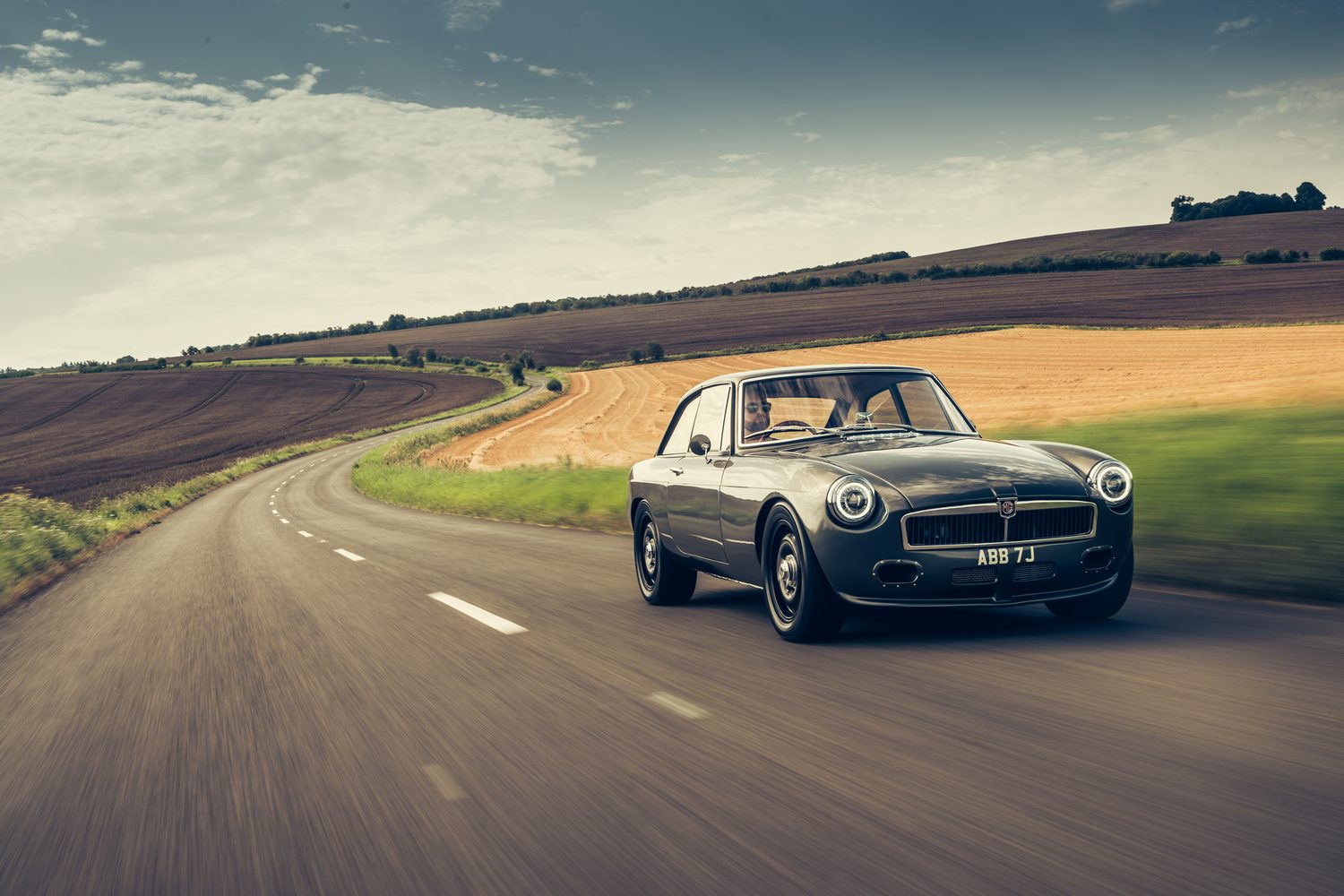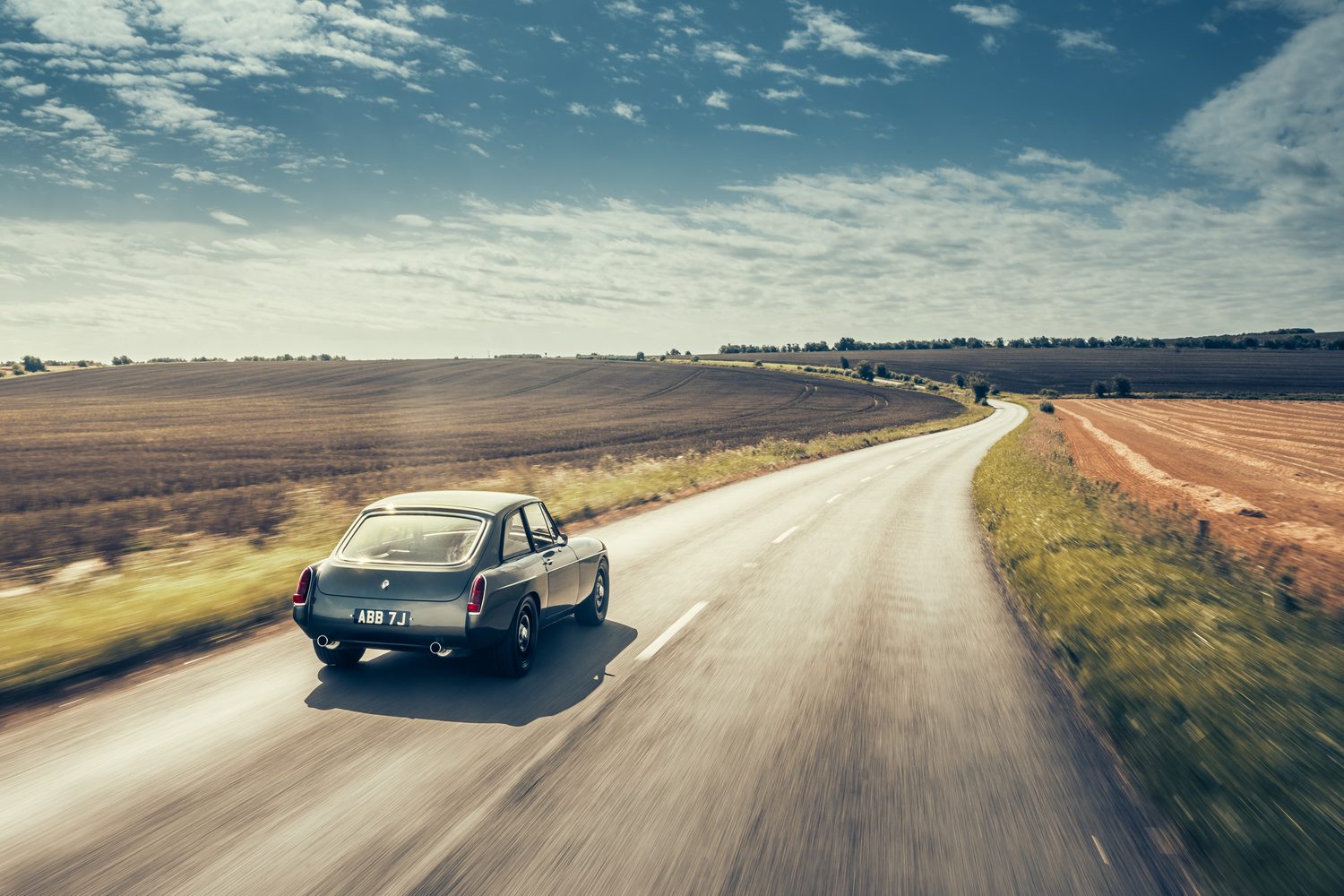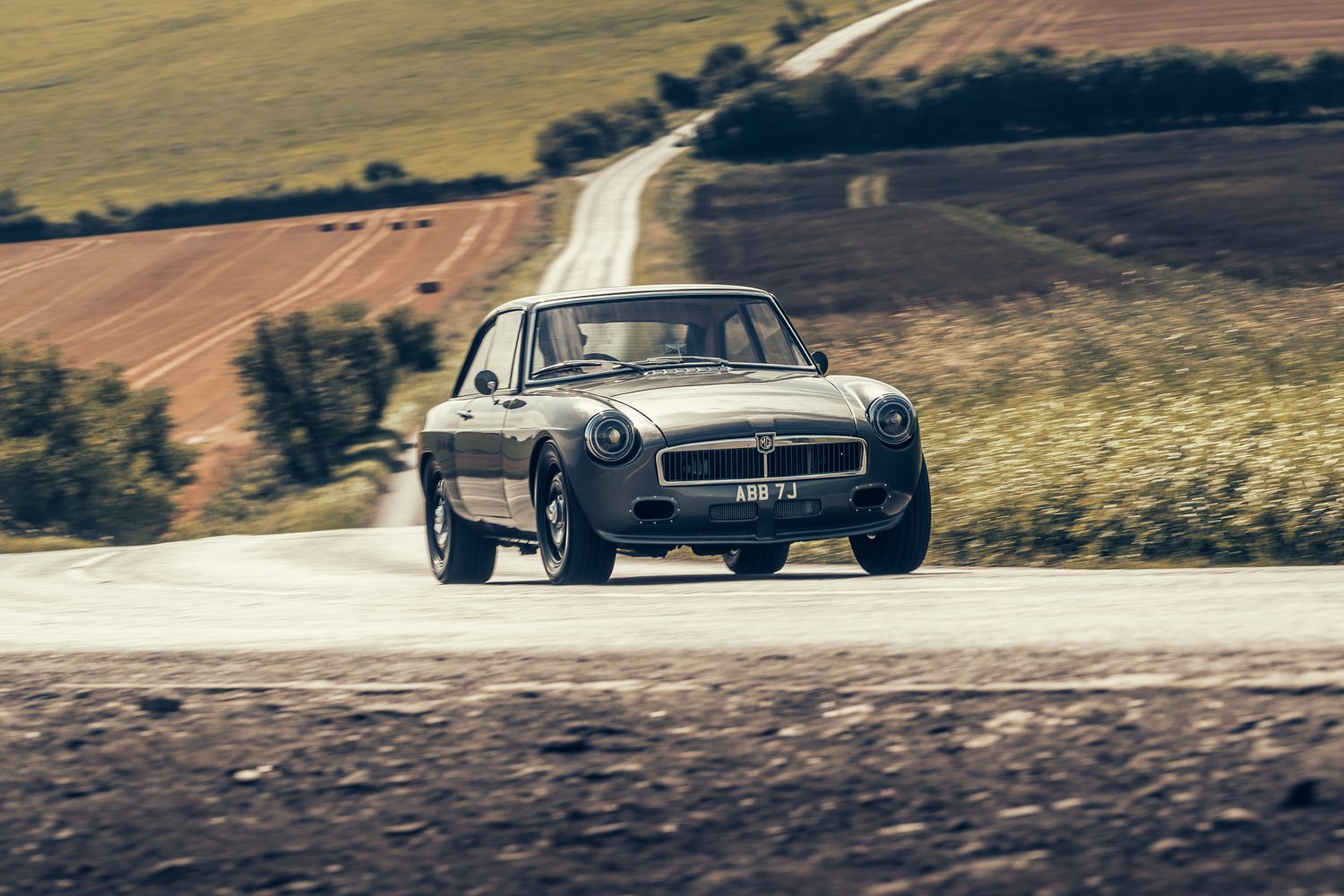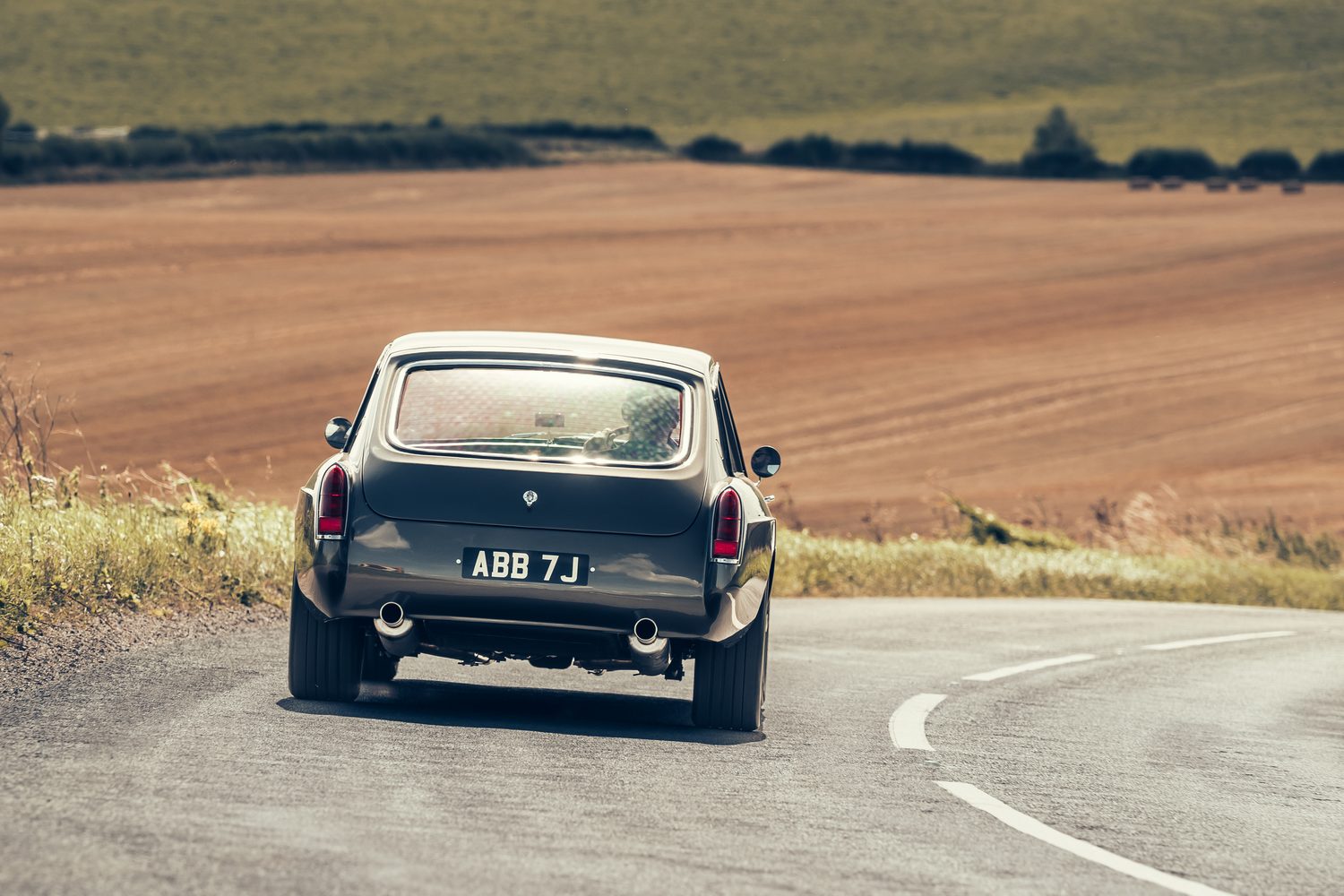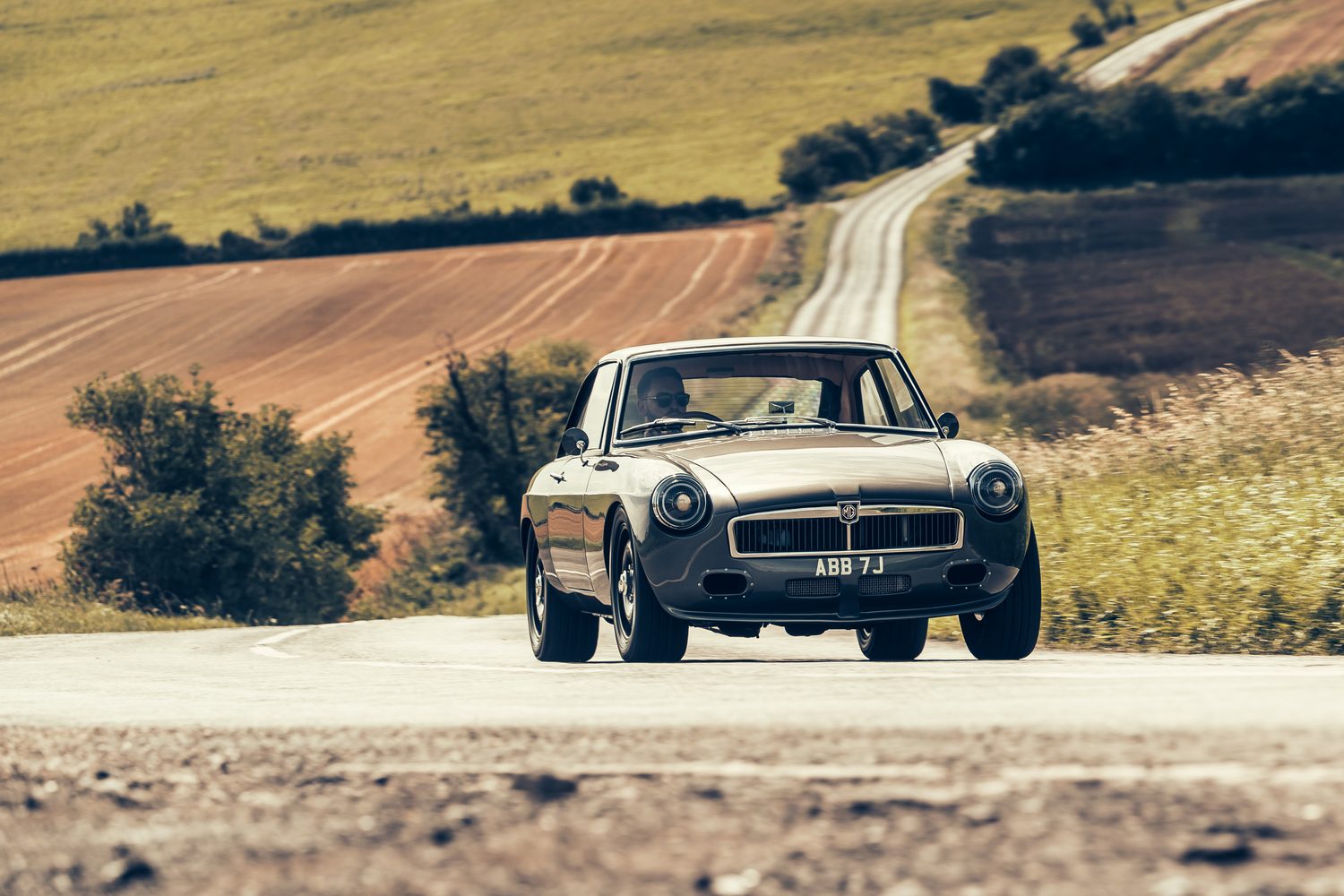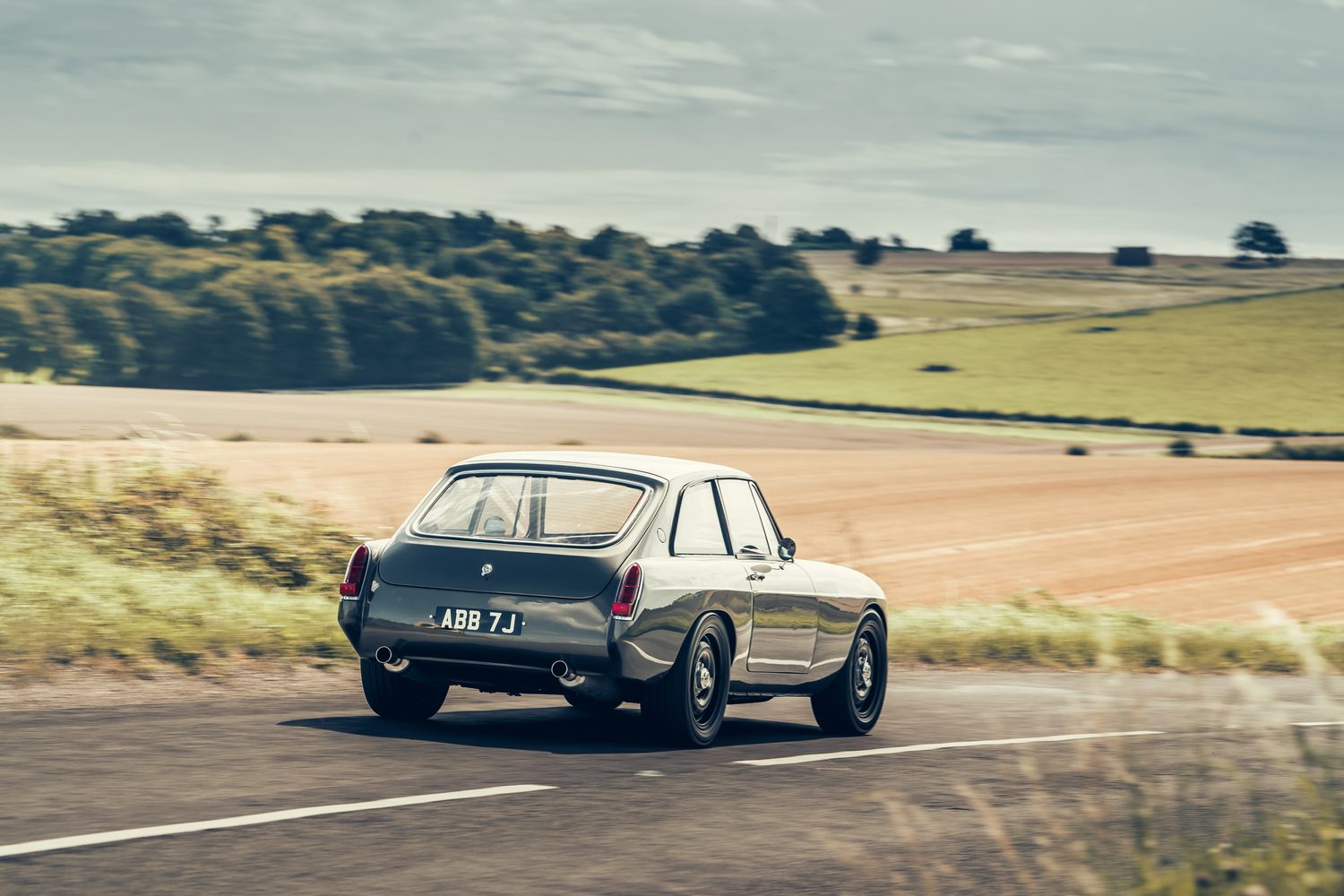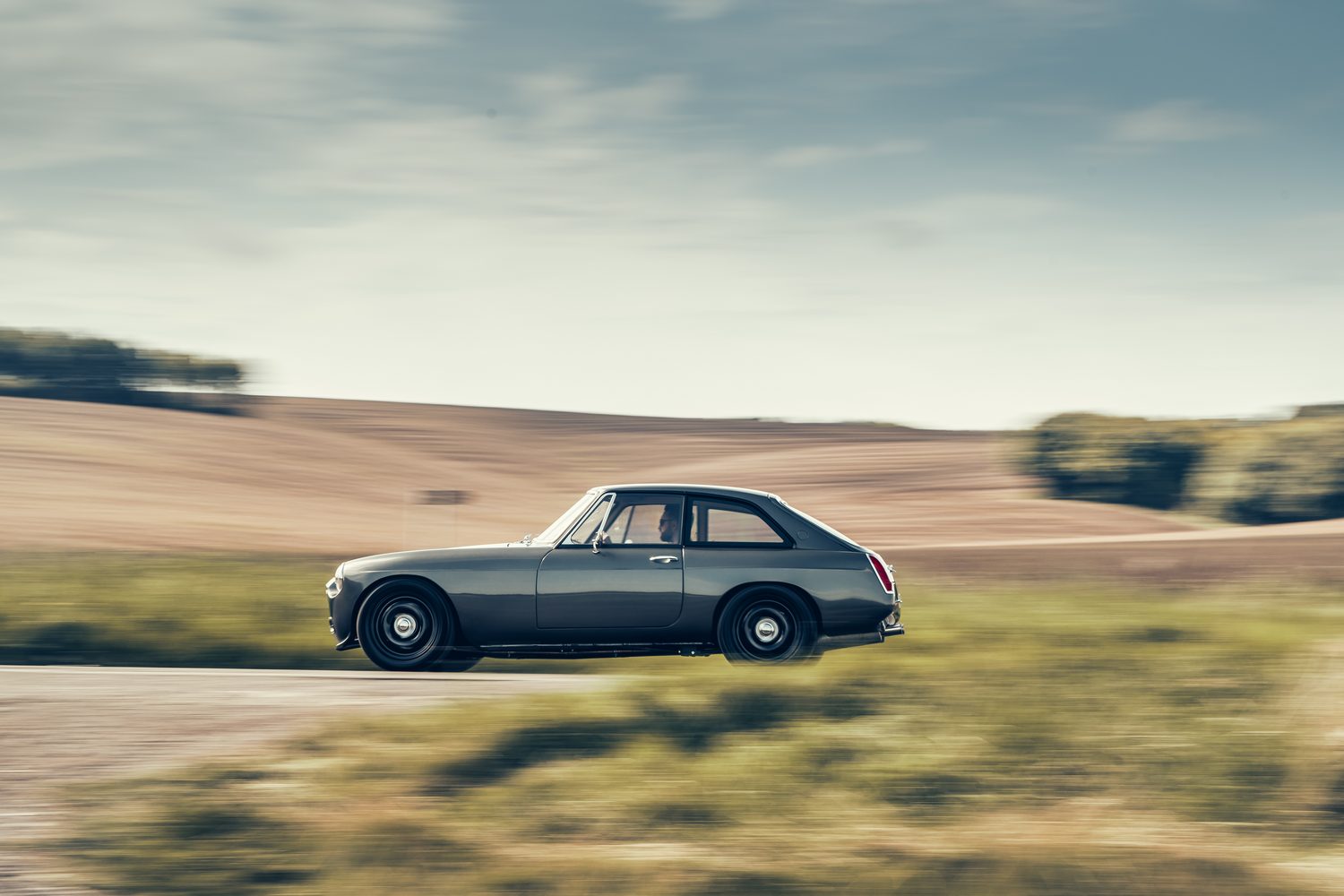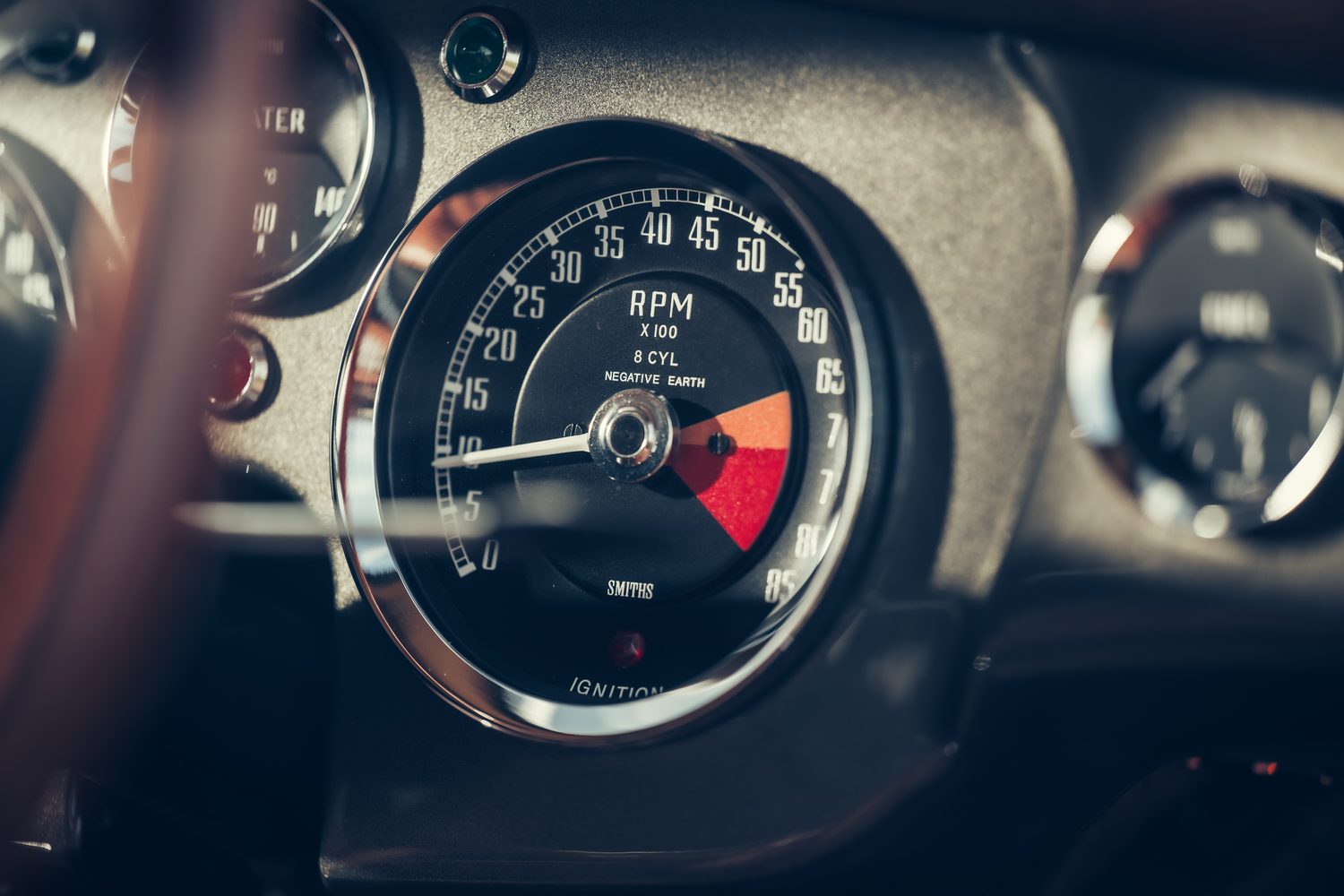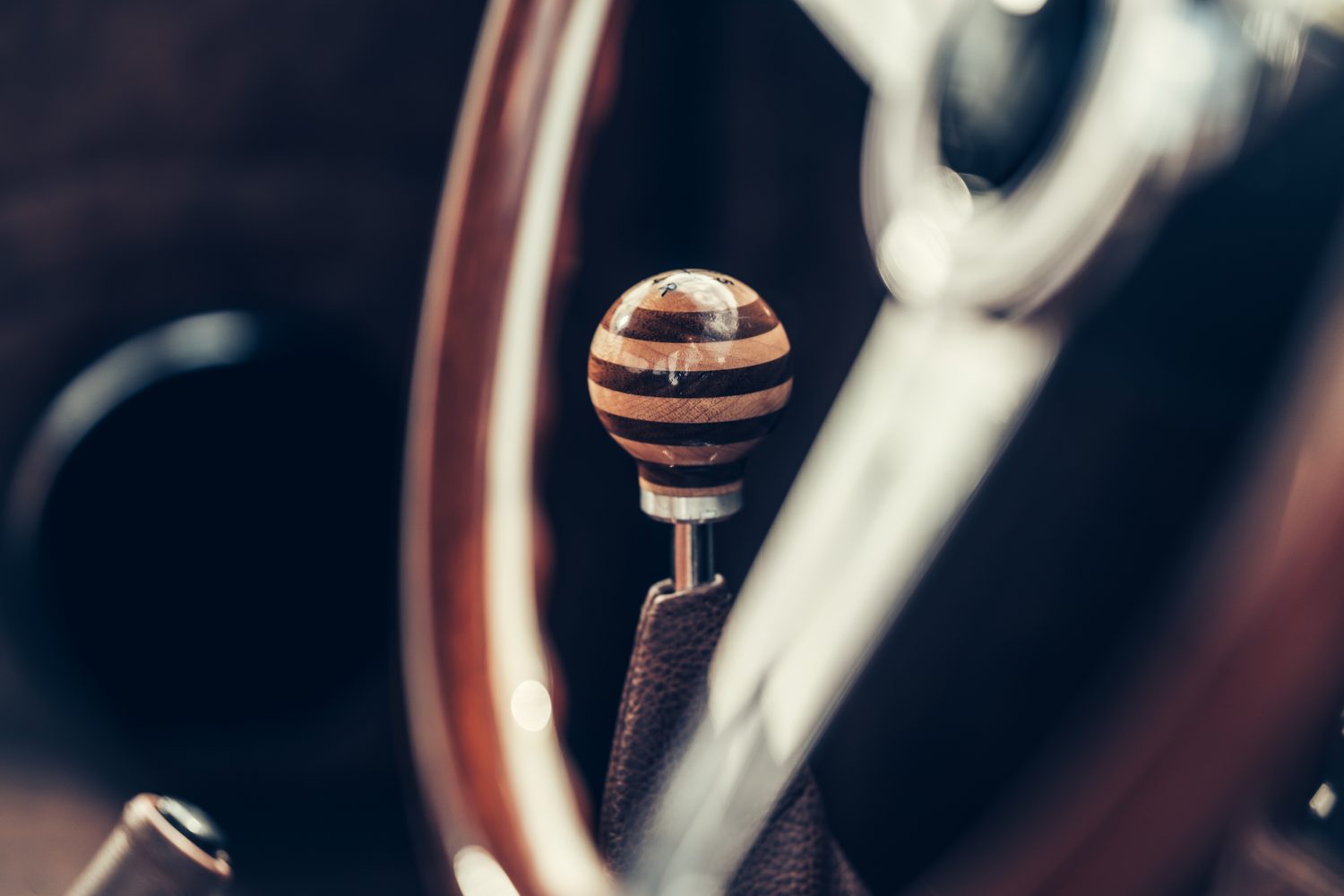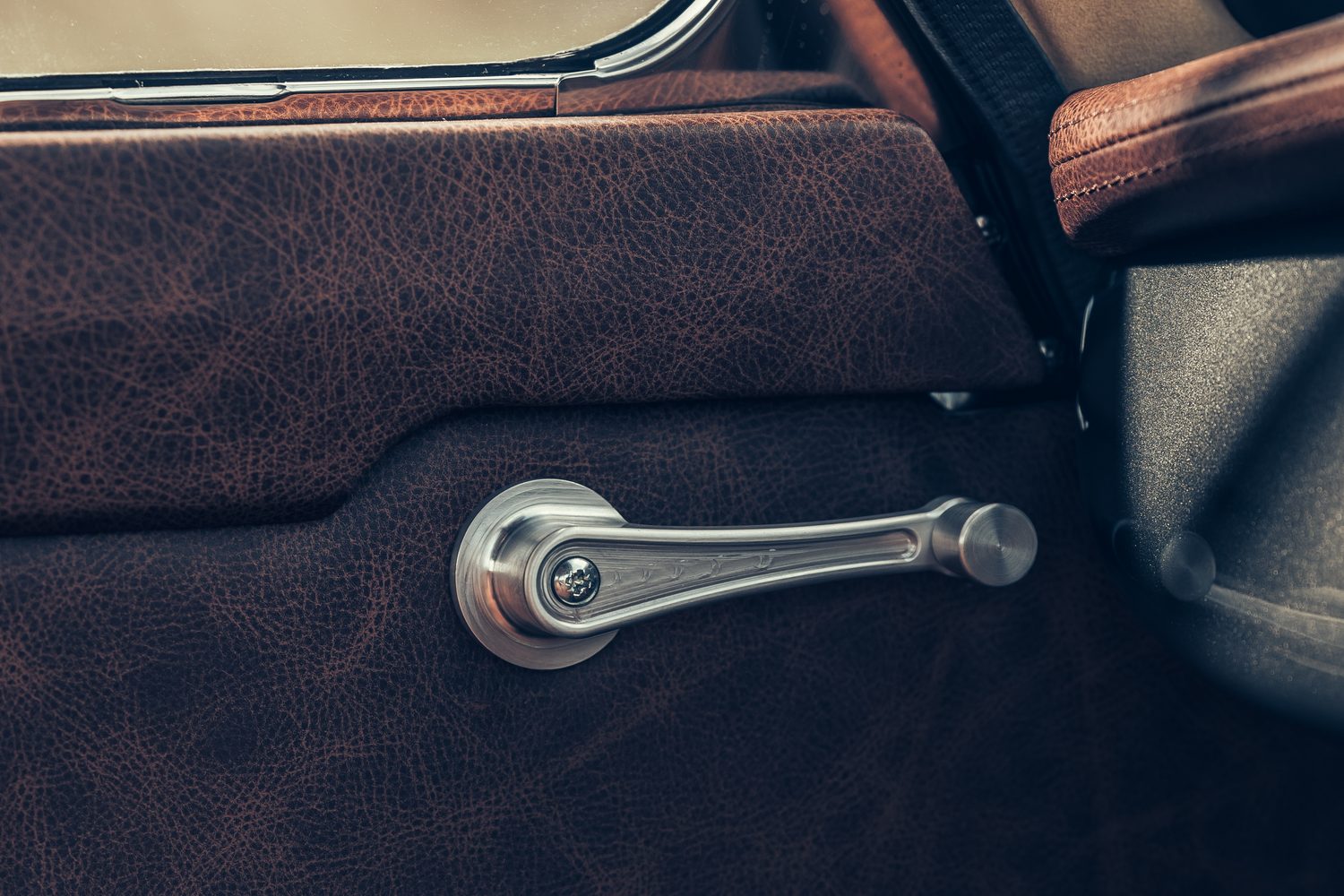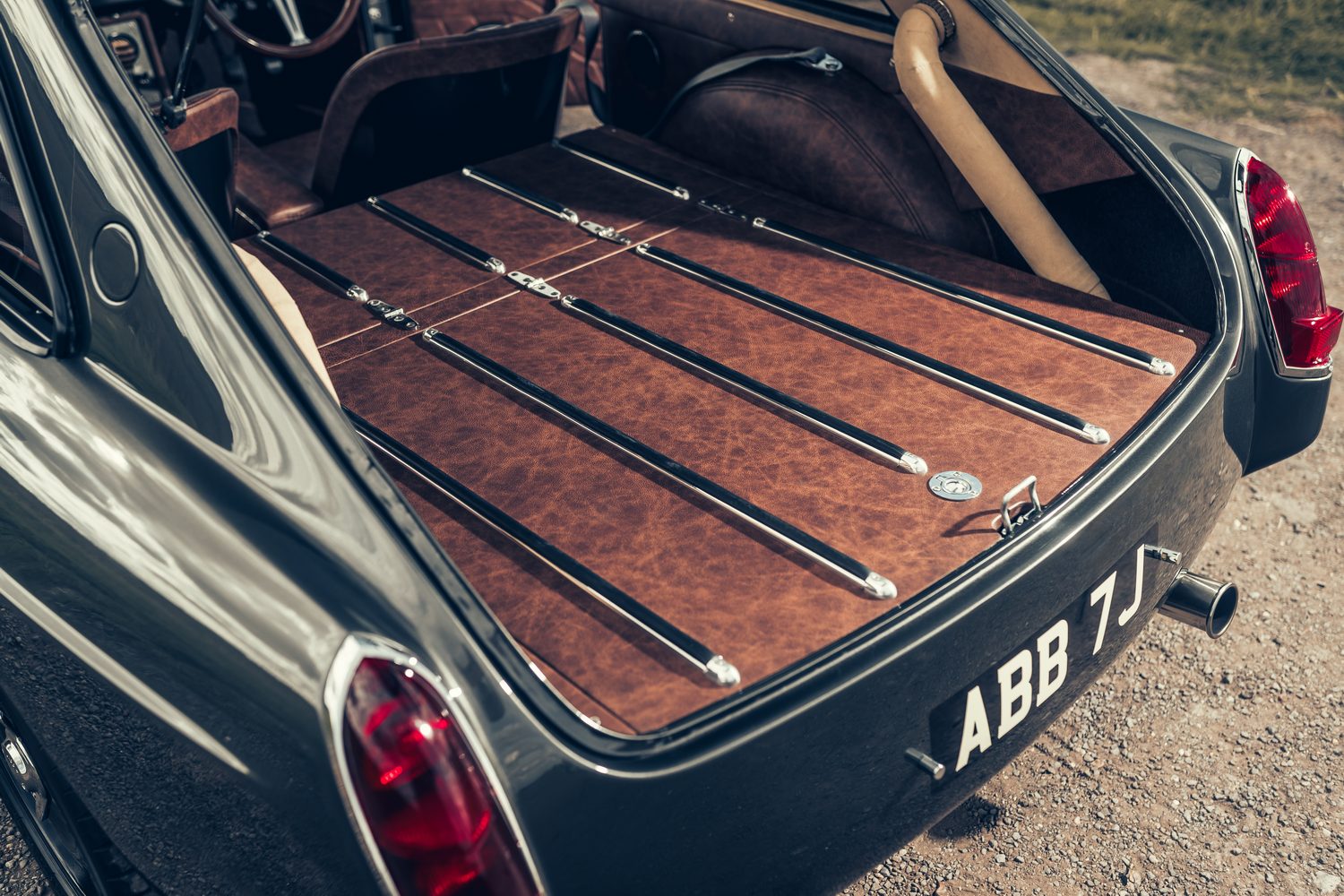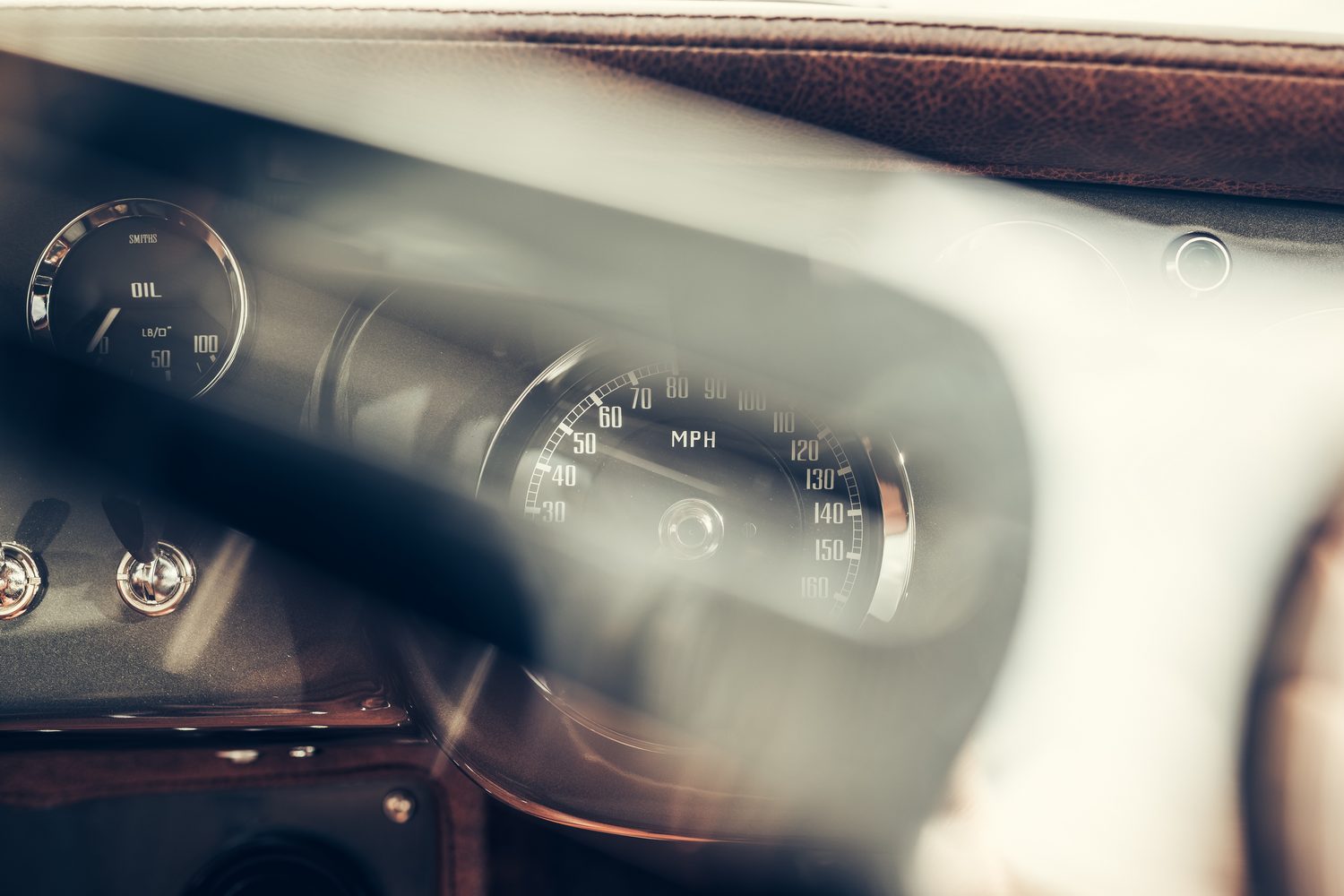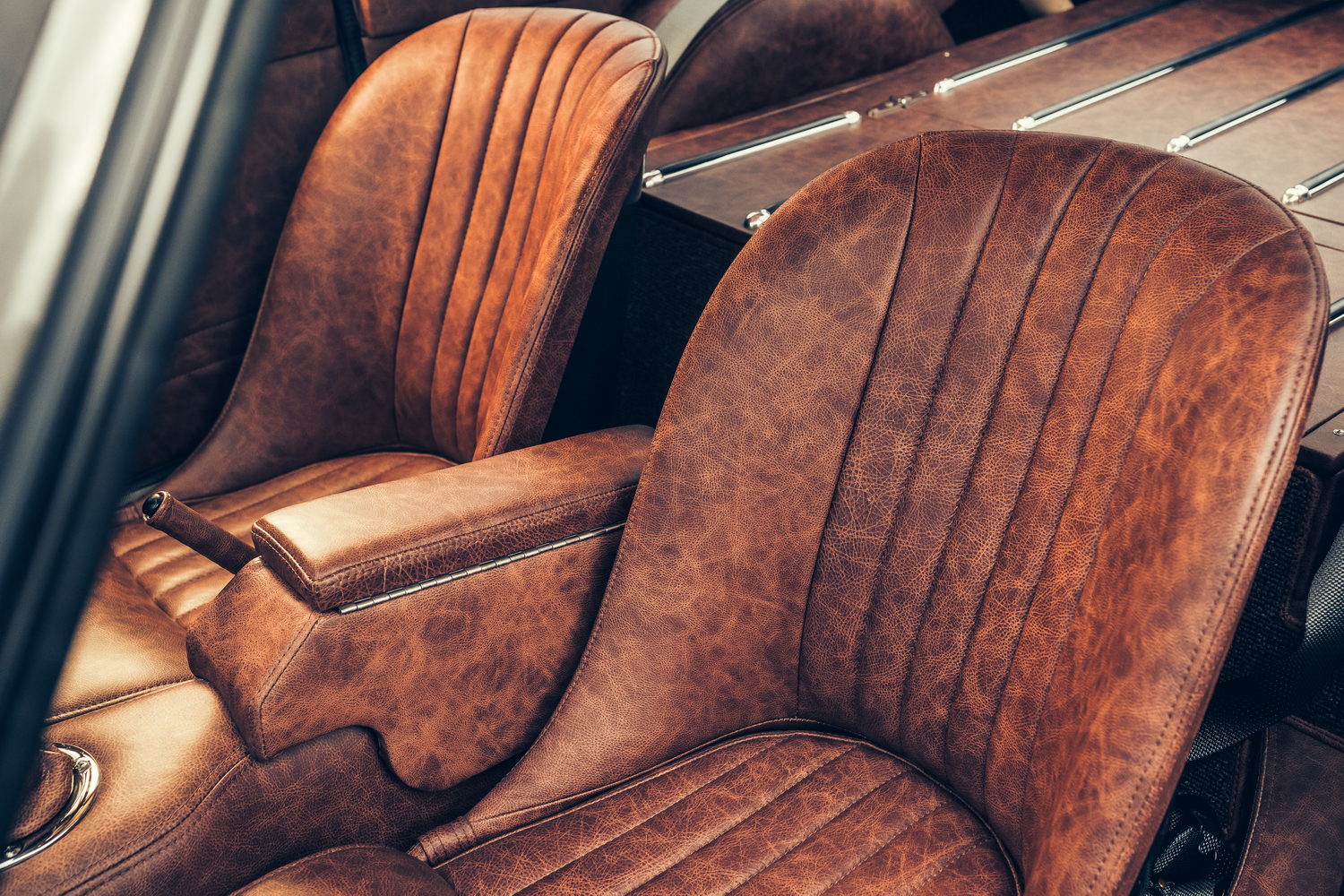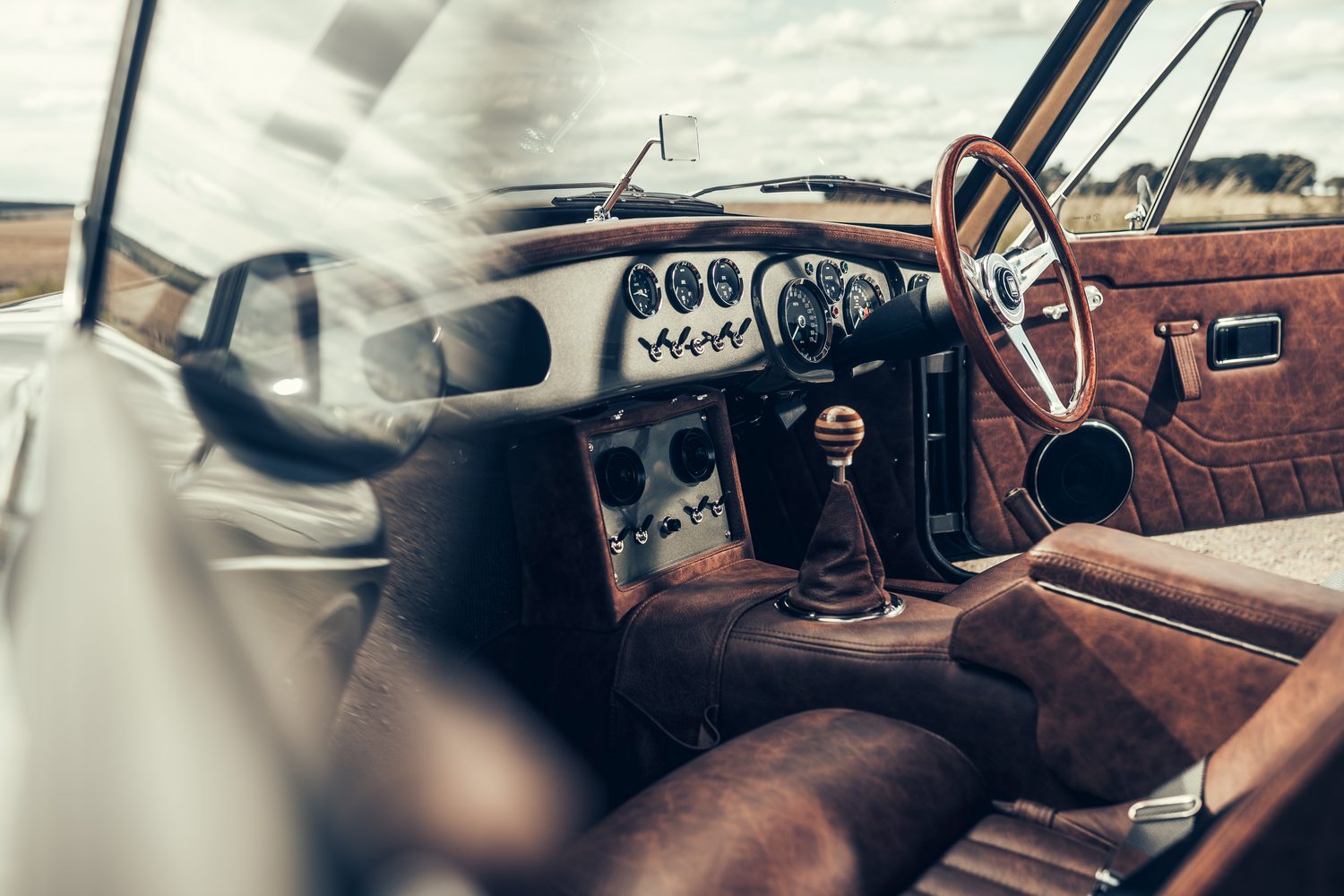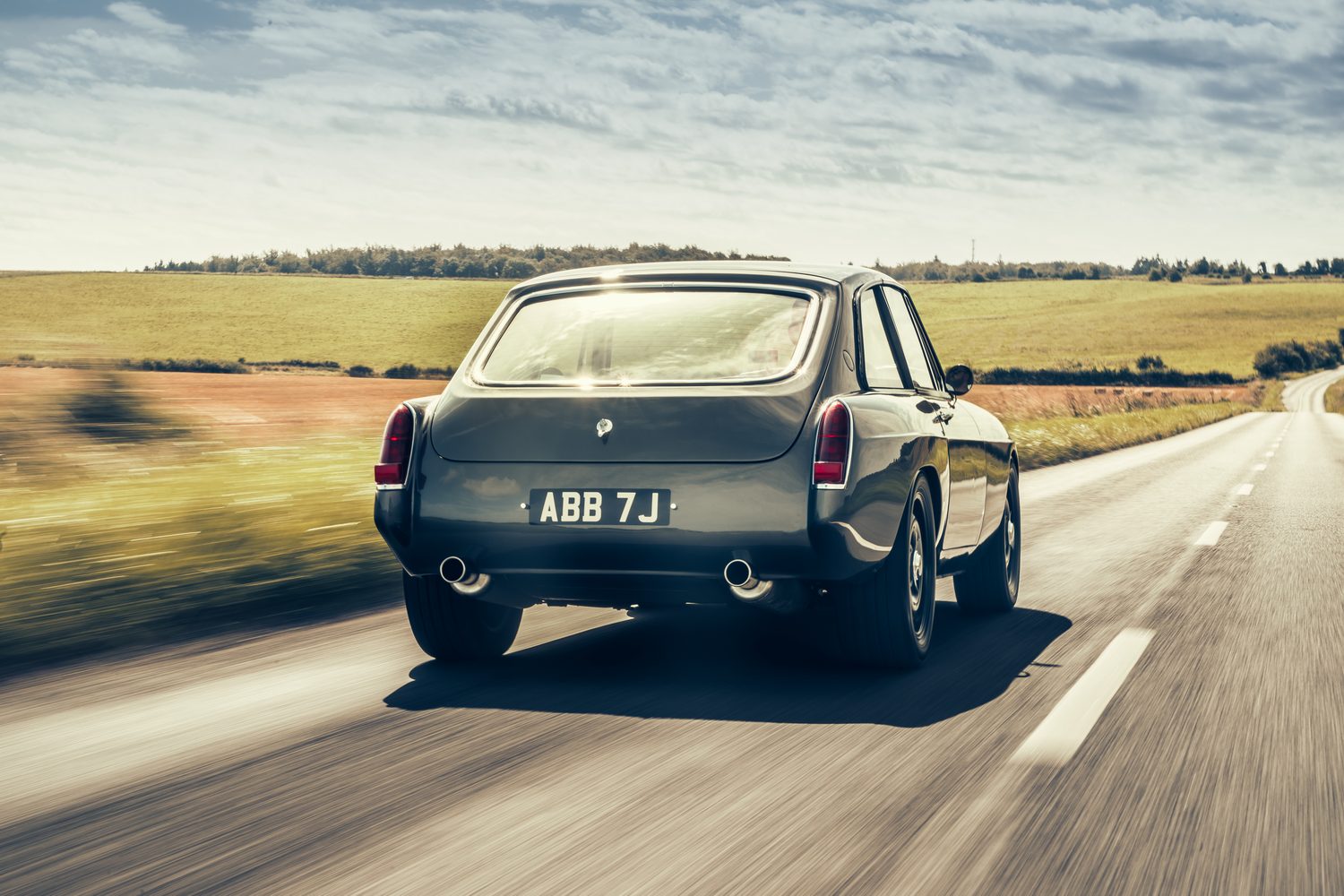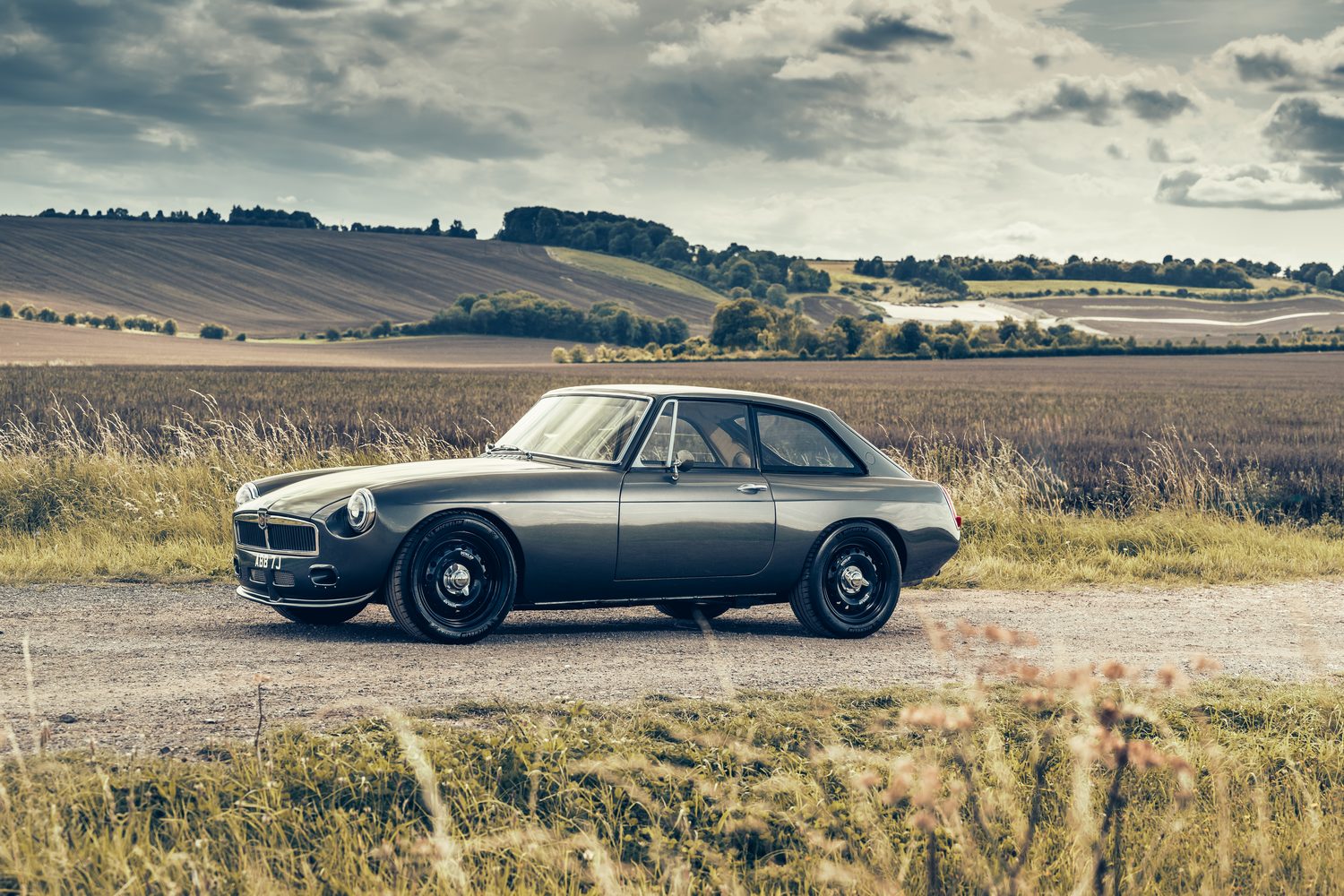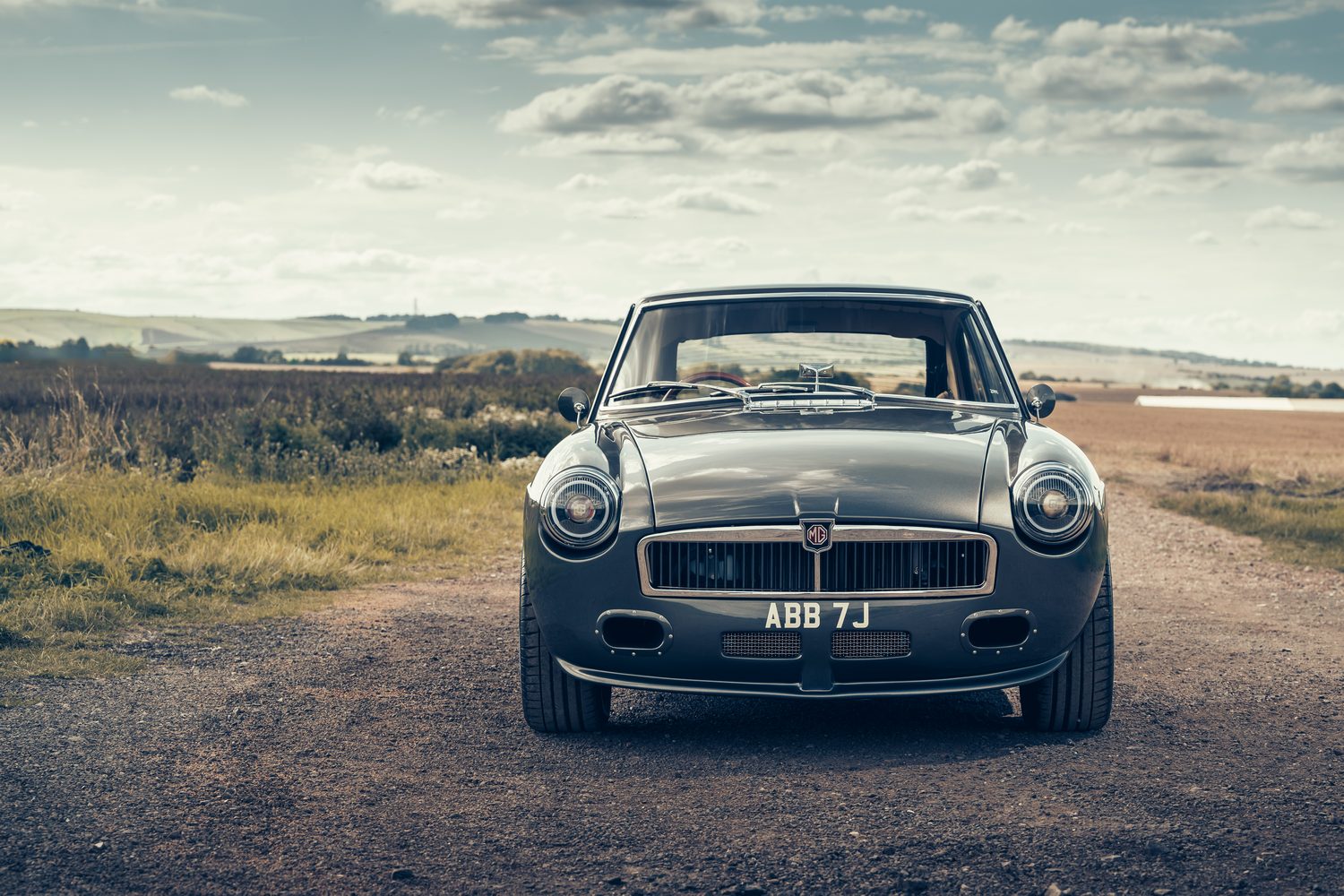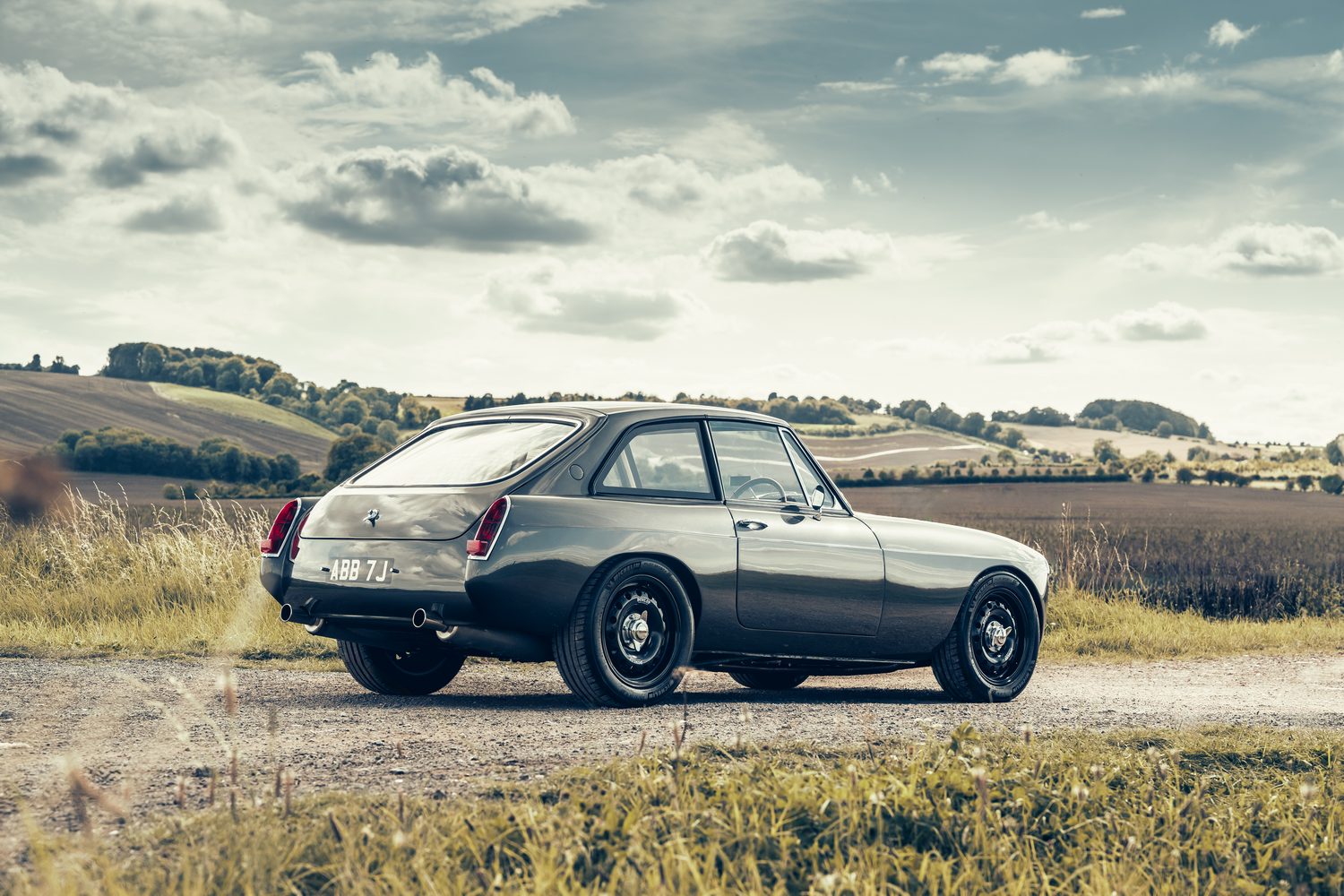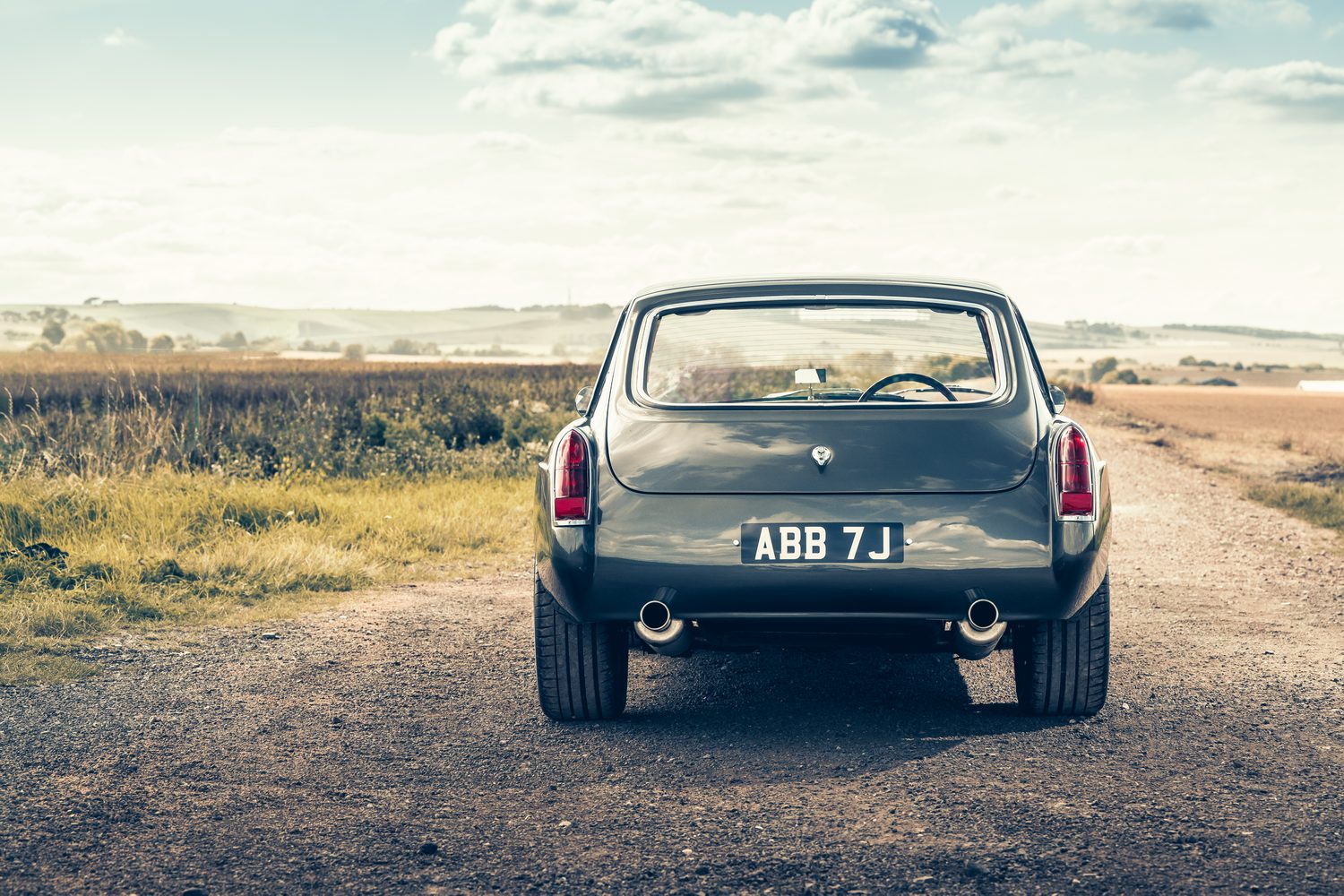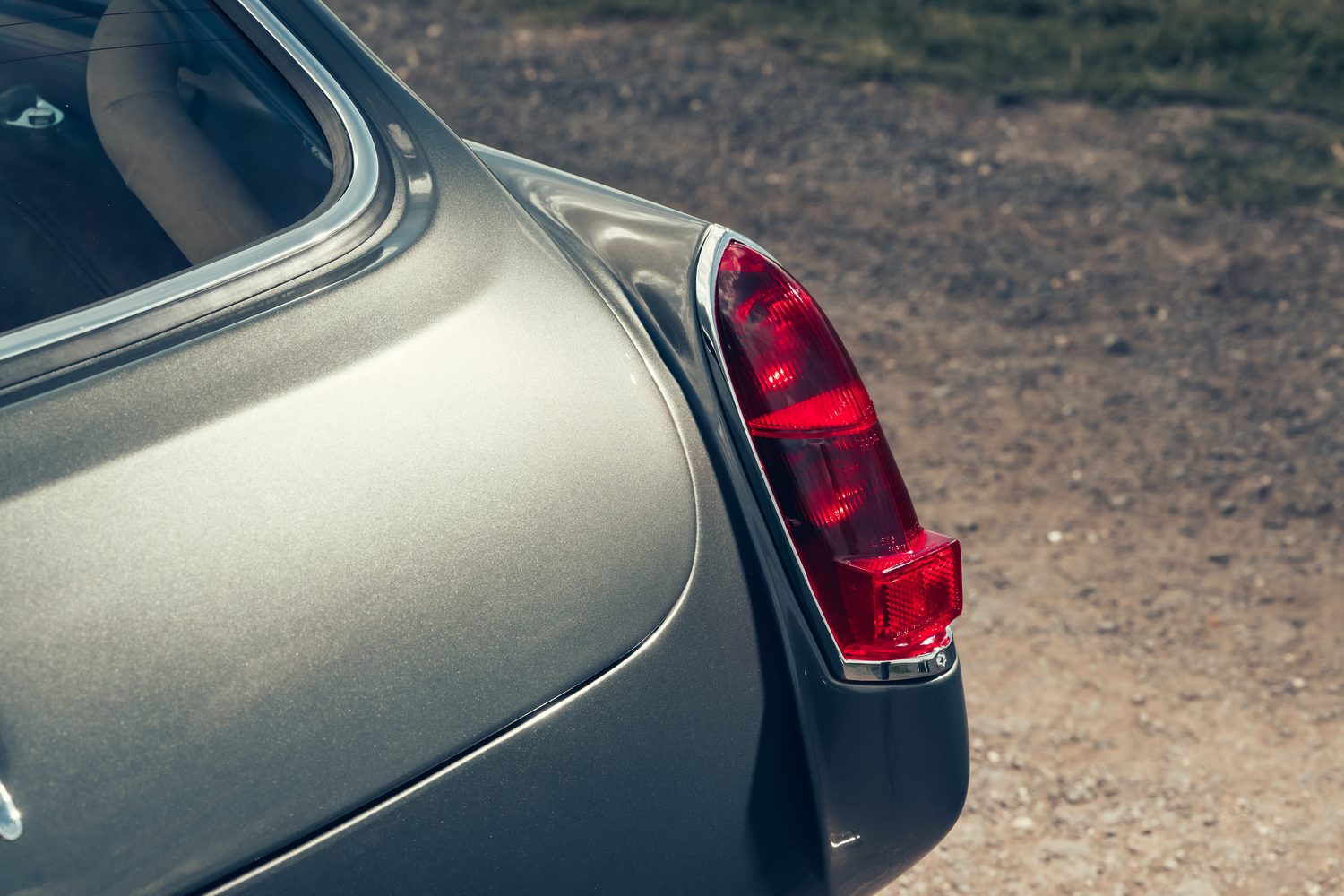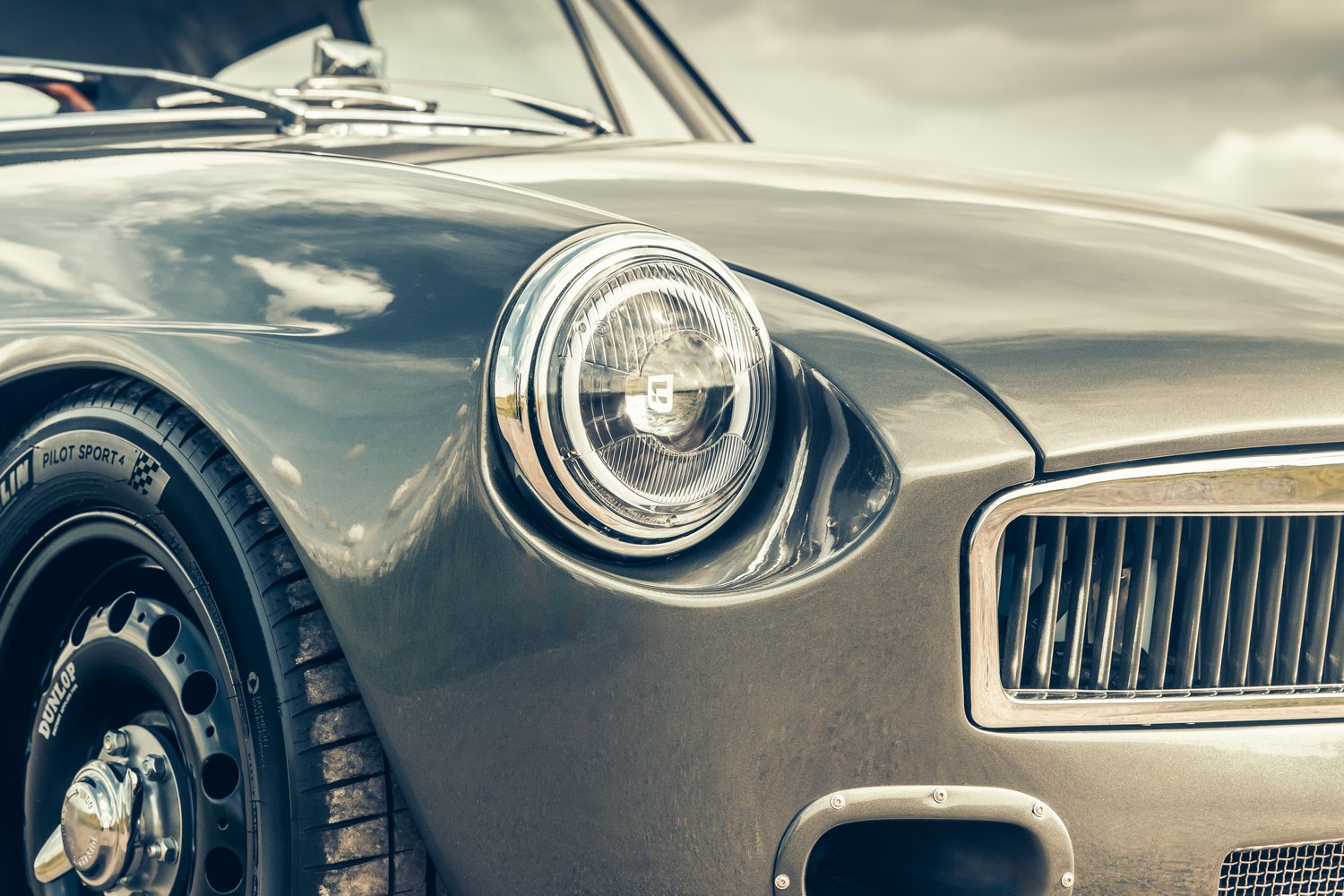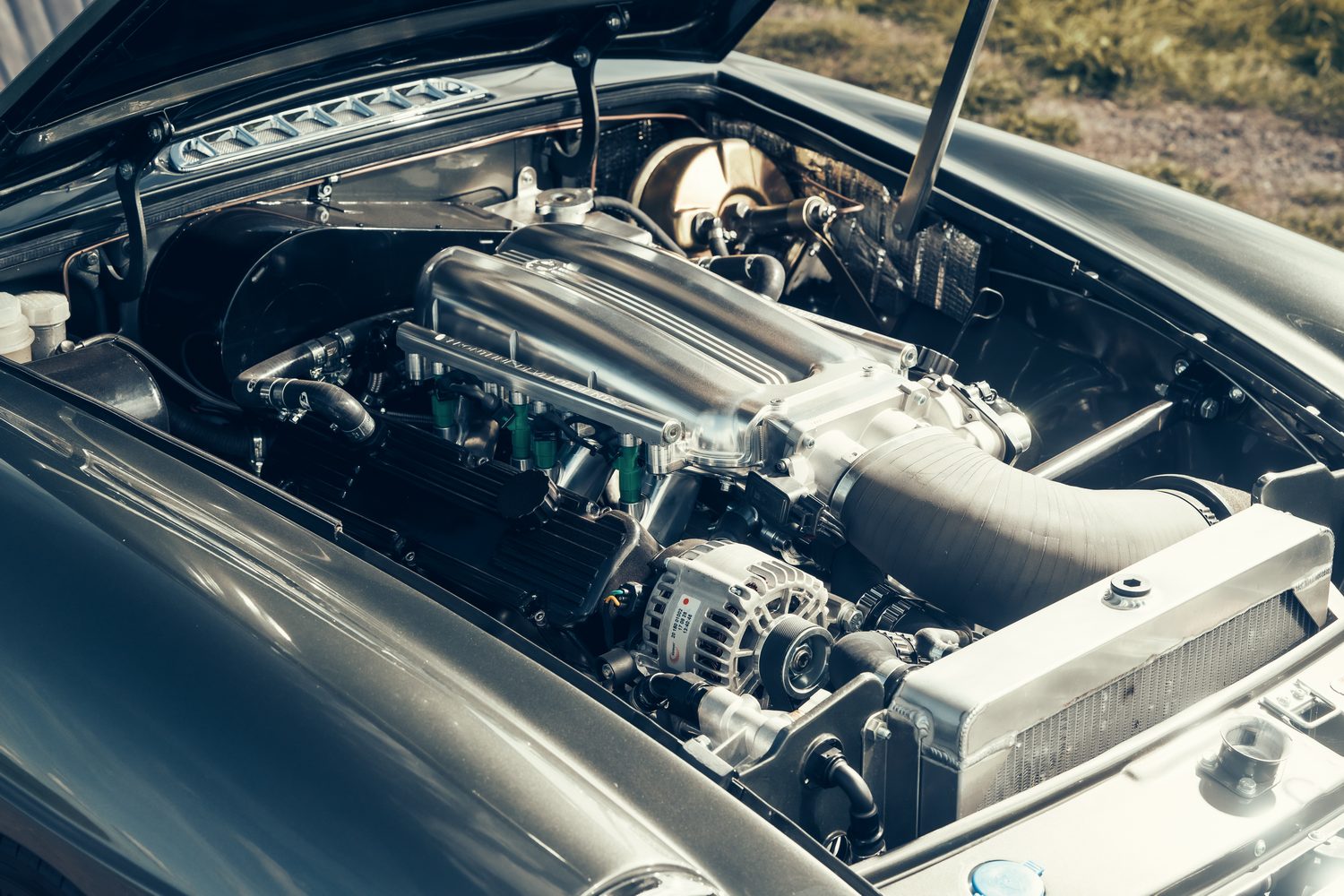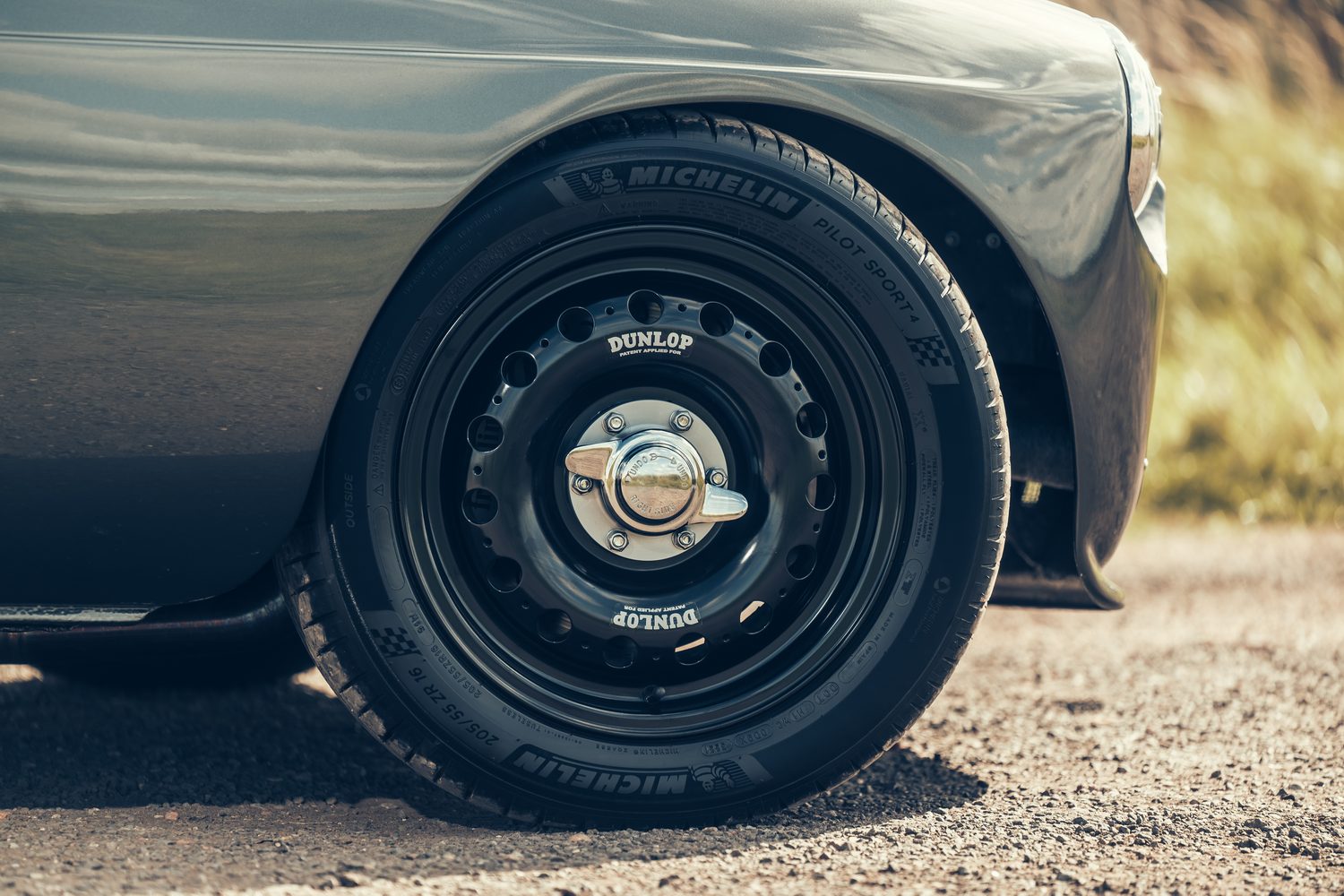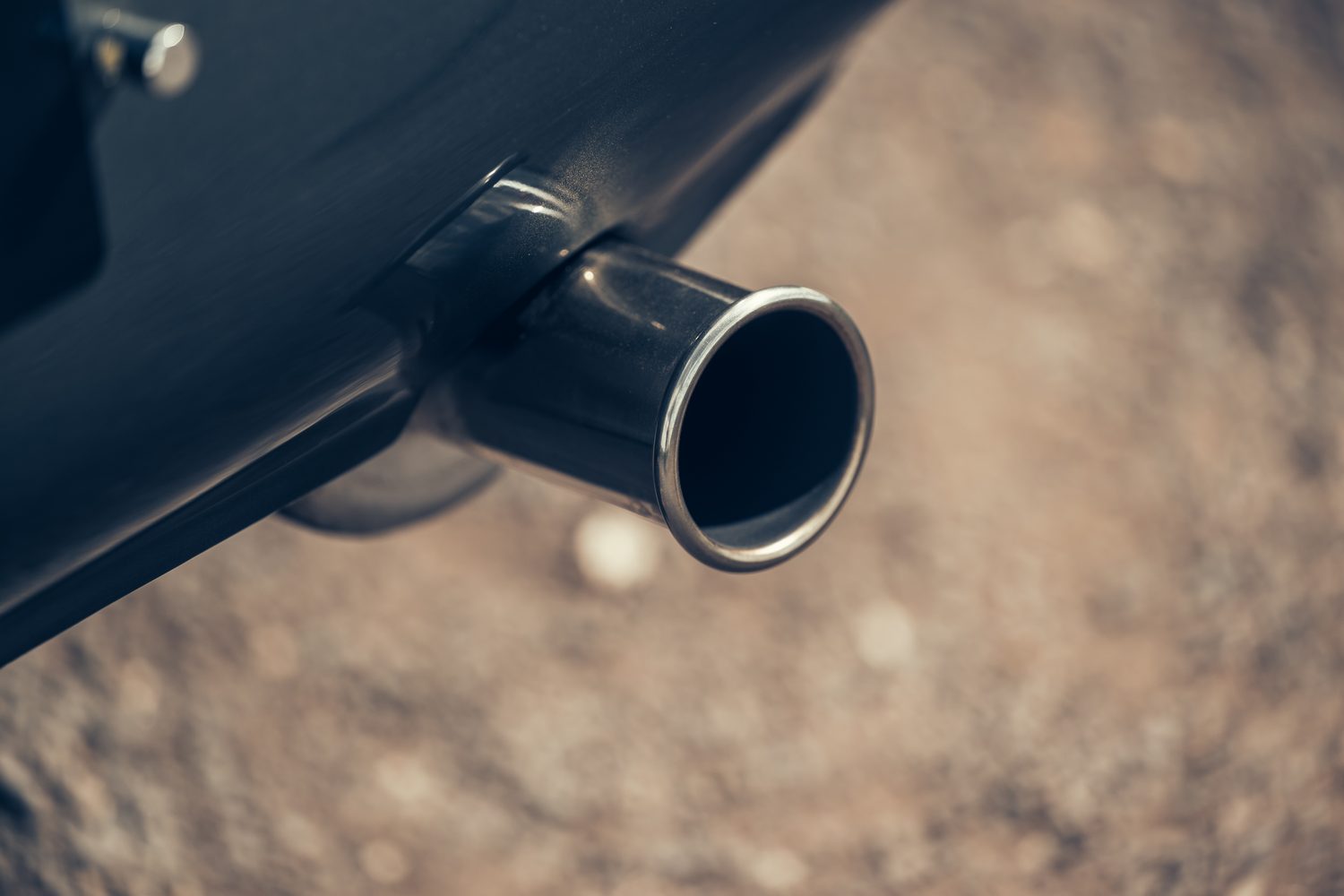The 'restomodding' scene seems to have grown out of all proportion of late, with companies turning up left, right and centre to modify, upgrade and improve on old cars. Let's face it, lots of them left plenty of room for improvement. Including the MGB, which is now 60 years old. To celebrate, long-standing specialist Frontline has announced a range of limited-edition, restomod MGB GTs powered by the classic Rover V8. That might strike fear into the hearts of those in the know, but Frontline knows a thing or two about updating British classics, and it claims to have made the V8 reliable. The question is, does it make the MGB better, and can it justify a price tag of more than €200,000?
In the metal
Unless you're big into the classic MG scene, you probably haven't heard of Frontline, but the British firm is a big deal in the restomodding world. In fact, the company claims to be among the pioneers of the concept, having set up shop in 1991 with the aim of "contemporising" the MGB roadster and its three-door coupe sibling, the MGB GT.
Having already built the LE50 - a 50th anniversary special limited to 50 examples - and the Abingdon Edition Roadster, both of which centred around four-cylinder Mazda engines and Mazda-derived gearboxes, Frontline turned its attention to the famous Rover V8 to power the MG's 60th anniversary present: the LE60.
Just 30 examples will be built, and all will be based on the MGB GT, but beyond that it's quite difficult to say how they will look. That's because Frontline's commissions are all completely individual, and the company told us they try not to say no to anything.
Whether you're buying an LE50, LE60 or anything else, the process starts with a meeting at the firm's unassuming HQ in Oxfordshire, about an hour's drive from London's Heathrow airport. There, the company talks customers through every stage of the build, from stripping down the donor car to getting the seating position right. The interior in particular is a blank canvas, and clients have specified all kinds of hare-brained options, including teak decking inspired by yachts. But if you want navigation, you can have it, and you can choose whether it's immediately obvious or hidden behind some part of the dash in true James Bond-style. And yes, Frontline has accommodated that for a client.
That means you can make your LE60 almost as individual as you want, but some common features will remain. For one, the bodyshell will be tidied and tweaked to LE60 specifications, removing panel gaps and seams, as well as decluttering the car by removing the original car's chrome bumpers and some other fixtures and fittings. Then, the car is widened for a sportier look. The whole thing is built to be completely symmetrical and to make sure all the panels fit to modern tolerances, before being coated in between four and six layers of modern paint and clear lacquer. The entire paint process takes a month, and customers can choose any colour they like. Other additions include modern LED headlights, flush-fit fuel filler caps and bigger 16-inch Dunlop-style alloy wheels, which cater for a bigger and more powerful brake system.
Quality is, as you'd expect from a car that takes a couple of years to build, absolutely immaculate, and every panel fits as beautifully as promised. Tim Fenna, the company's founder, says the idea is that the car looks like a classic MG, but with a 21st century feel to the engineering, and that's exactly what Frontline has achieved. If a premium brand were building MGBs today, this is how they would feel.
The interior is equally spectacular. Again, it's difficult to draw too much inference from our test car, as every Frontline is essentially a one-off, but the cabin quality is superb, and the atmosphere is pure classic MG. Yet everything works properly, everything feels upmarket and nothing rattled or creaked in our time with it. The leather is particularly beautiful, with its semi-distressed look and soft suppleness, while the classic-look gauges give it real atmosphere.
Naturally, it wasn't possible for Frontline to tailor the car to us, but customers would have both front seats tailored to their specification, right down to the lumbar support. Frontline has a rig that shows buyers how it will feel to sit in the finished vehicle, and it uses that - as well as its inhouse trim shop - to make tweaks and changes until the buyer is happy with the position. And again, Frontline says almost any request, from the style of seat to the materials used, will be granted. In the case of the LE60, though, the car gets Frontline's Aluminium Tub seats as standard, allowing front-to-rear adjustment and a lower seating position for taller drivers.
Frontline has also fitted the LE60 with a period-correct style of interior, although the back seats have been ripped out to create a kind of shooting brake-style cabin with a massive boot space. There are more practical modern features, too, including Bluetooth connectivity and a new audio system included. And if customers wish to specify other upgrades, the option is always there. As standard, though, there's a four-channel amplifier, door speakers, dash tweeters and a six-inch subwoofer, all of which are calibrated to suit the individual acoustics of each vehicle. And speaking of sound, the LE60 also gets extra soundproofing and heat insulation, while the windows are offered with a ceramic tint that keeps the car cooler in summer and warmer in winter.
Driving it
The beating heart of the LE60 is the Rover V8, and this is the first time the engine has been used in a Frontline product. However, it isn't exactly an original, off-the-shelf unit. Frontline has changed the pistons, the cylinder head and the connecting rods, as well as the crankshaft and the cams. There's a new state-of-the-art engine management system, a drive-by-wire throttle and fuel injection, as well as special exhaust manifolds that ensure each cylinder's gases have the same distance to travel.
In short, the block of the 4.8-litre engine is pretty much the only Rover V8 part, and that's all been done with the aim of improving performance and reliability. Frontline prides itself on building cars you could use every day, and that was one of the key hurdles facing the company when it decided to take on the V8.
That work done, Frontline says the engine should work as well as a modern unit, and it certainly produces modern levels of power. With 380hp and more than 400Nm of torque - all of which goes to the rear wheels via a five-speed manual gearbox - the 1.1-tonne coupe can get from 0-100km/h in around four seconds. That's the sort of acceleration you get from manual Porsche 911s.
And while Porsche has stoically stood beside its flat-six petrol engines, they aren't nearly as characterful as the Rover V8. At idle, it burbles and grumbles in a flatulent yet somehow menacing way, and it sounds even better under load. Head up towards the top of the rev range and it snarls and spits in a cacophony of anger. It's a fabulous powertrain, and the custom-made gearbox is equally good, allowing it to put all of its might down into the asphalt. It's old-school, of course, but the two work in perfect harmony to provide a demonstration of how good motoring - and the MGB GT - could have been in the 1960s.
Similarly, the handling is just as stellar, with Frontline creating its own steering system that can be adapted to the driver's desires, as well as fitting a limited-slip differential for more traction out of corners. But while changes have been made, the basics have not been altered. The LE60 still has the same live rear axle as standard, but Frontline has tweaked it so there's less body lean, more traction and adjustable dampers, allowing a degree of ride comfort tuning and improved handling.
The result is something that feels a bit like an old Mazda MX-5, in that it's softer than you expect from a modern sports car, but it still has lots of feel and balance. There's the same sense of body movement, too, yet it still feels really light on its feet and incredibly agile for such an old car. In short, the handling is like the powertrain, in that there's an old-school feel with a more modern twist. It's a great mixture, and it means the ride is firm without being uncomfortable and the handling is keen without being needlessly sharp and unfaithful to the original car.
What is unfaithful to the original, though, is the braking system. Much bigger and more powerful than anything ever fitted to an original MGB, or indeed any other Frontline build, they make the car stop brilliantly, with the pedal providing plenty of feedback and power. It's a big confidence boost when you're driving, and it solves one of the noticeable Achilles' heels of any original classic car.
What you get for your money
Defining the LE60's price tag is a bit of a pointless exercise because you can essentially pay as much as you want. Choose some rare wood trim from the depths of the Okavango delta, for example, and the price will rise accordingly. In rough numbers, Frontline will charge a minimum of around £200,000 (around €230,000 at the time of writing) for an LE60, and that money will only increase as you add more options. The fact of the matter is, if you have to ask how much an LE60 costs, you probably can't really afford it.
However, it's equally true to say tidy MGB GTs come a lot cheaper than that, so if you just want an MGB that works properly, it's probably better to start there and get a specialist to add some useful mechanical upgrades. If you want a completely bespoke car that looks a bit like an MGB GT, get in touch with Frontline.
Summary
Though the headlines will say Frontline basically updates MGBs, the LE60 is much more than just a classic car with a few tweaks. This is a completely bespoke, tailor-made, purpose-built car with the air of a classic and the heart of a modern vehicle and artisanry that's second to none. But for those who place emphasis on originality, or those who just want a proper classic car that works when they fire it up on a Sunday afternoon, a tidy original with some modern engineering under the bonnet will provide much better value for money. For wealthy customers who love MGBs and would rather use a bespoke example every day than invest in the latest supercar, the LE60 is the obvious choice.

